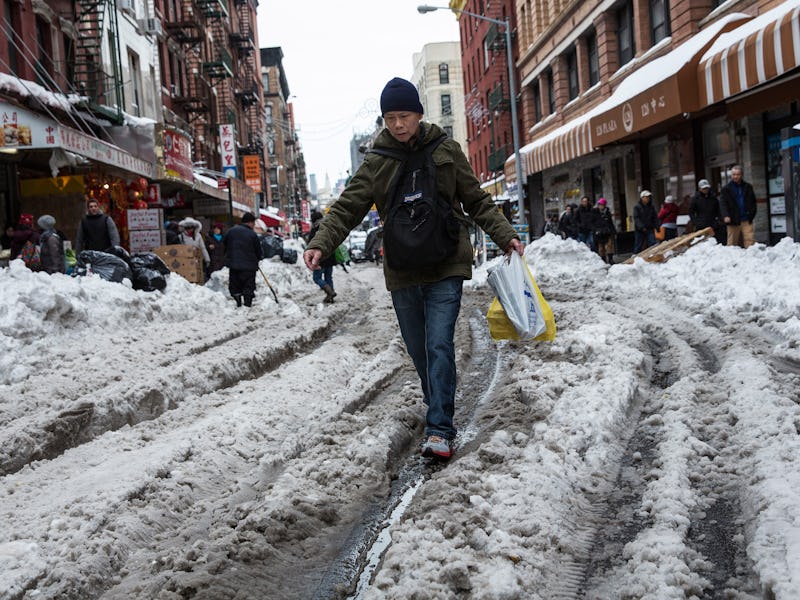How Long Will It Take for This Snow to Melt?
The physics of snowmelt get absurdly complex.

As some 33 million people up and down the eastern half of America return from their blizzard-induced reveries — reveries in which they seemed oddly pleasant and even smiled at one another — to their normal operating state of perpetual annoyance and disdain, most everyone’s wondering the same question: When will this freaking snow melt?
The storm, named by the Weather Channel as “Jonas,” dumped as much as 30 inches in New York City, Baltimore, and parts of Pennsylvania, and 20 inches in Washington D.C.
Jonas broke century-old records in some parts of the Northeast.
The resounding groan from residents in these areas remains audible, but there’s hope, yet: the snow will eventually melt. The physics of snowmelt get complicated, fast — there’s a whole academic discipline devoted to the study — but what follows are the basics. (You may not need to dig out your car after all.)
Pivotal Weather’s animated map suggests that the snow depth will drop to zero by Friday, which may be relatively accurate as a vague forecast.
Even if that doesn’t come to pass, this animation still should give us hope:
A vision of hope for the week ahead.
In New York City, Jonas’s snow was light and fluffy, rendering snowman-building almost impossible.
- If, after such a snowfall, temperatures and wind speeds spike, the melt tends to be relatively rapid.
- If, on the other hand, snowplows clear the roads but thereby compact the snow, the resulting density will spell a far more prolonged melt time.
A ski mountain’s ideal snowpack is quite literally a snowpack, because the denser the pack, the longer the snow will take to break down, and the longer the slopes will remain covered. Similarly, rain that then turns snow to ice will make the mess stick around longer, as it will condense the snow already on the ground and strengthen the bonds. Rain with considerably warm temperatures, needless to say, will make the mess disappear.
The two remaining factors are noteworthy within cities, where, in general, the buildings are tall and concrete covers just about everything. The former fact means that the sun will not shine on the streets as long as it otherwise would, hindering the rate of the melt. The time the sun does shine on the snow, however, will be more effective in melting it. Regarding the latter fact: Concrete, with its high thermal mass, will absorb more heat than, say, a lawn, and the residual warmth will melt the snow quicker.
Get diggin'.